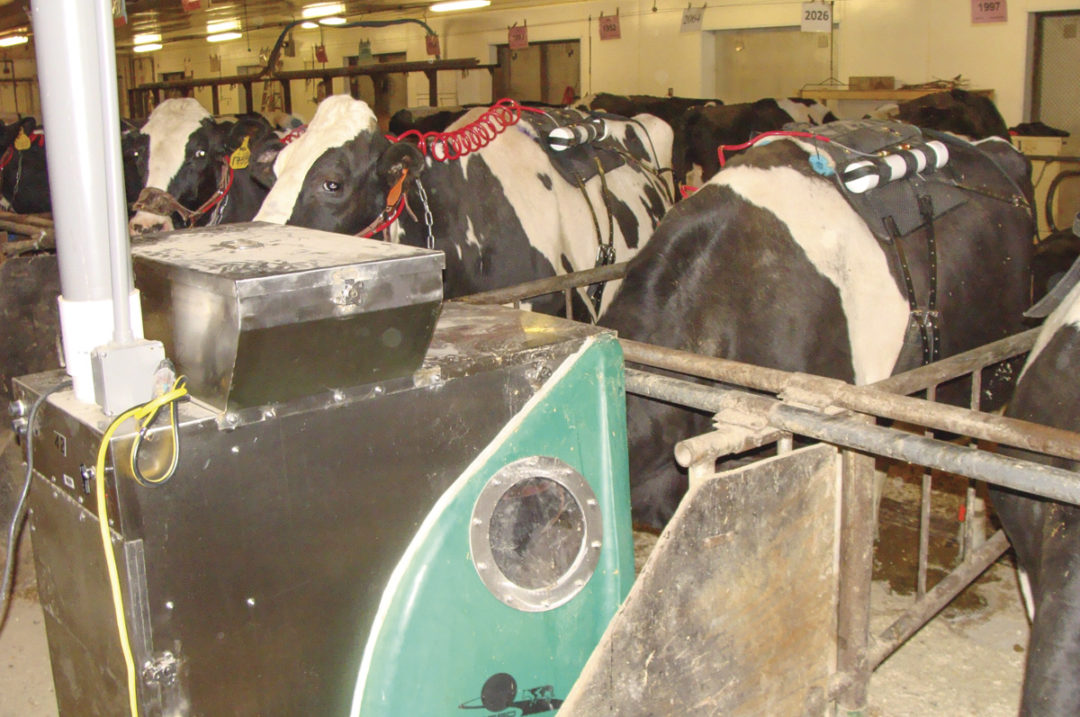In the big picture of U.S. greenhouse gas (GHG) emissions, contribution of livestock is relatively small. Based on the U.S. EPA’s 2022 report, agricultures’ contribution to the total GHG emissions in the U.S. was around 10% in 2020 on a million metric tons of carbon dioxide equivalent (MMt CO2e) basis. Of this 10%, about 39.5% was livestock methane emissions (both from enteric fermentation and manure management) and another 3.3% was nitrous oxide emissions from manure management. With all this put together, total livestock contribution to GHG emissions in the U.S. can be estimated at about 4.3% (not accounting for emissions from growing animal feed). Despite this relatively small contribution, industry and animal scientists have been actively researching ways of mitigating livestock emissions, in no small part because decreasing methane production in the rumen is ultimately related to improving the efficiency of animal production.
Work at Penn State has produced a number of key reports on the mitigation of livestock GHG emissions. When it comes to nutritional interventions, in our opinion, the only viable and practical mitigation strategy currently available is the methane inhibitor 3-nitrooxypropanol (3-NOP with the commercial name Bovaer), developed by DSM (Dutch State Mines) and approved for use as a feed additive in Europe, some Latin American countries (Brazil, Chile) and elsewhere. Most, if not all, of the research with 3-NOP in dairy cows in the U.S. was conducted at Penn State, and some was used for the European registration of the inhibitor. The compound acts on a key enzyme, methyl-coenzyme M reductase (MCR), responsible for the last step of methane synthesis in the rumen. Being a small molecule, 3-NOP is rapidly metabolized. Work at Penn State has demonstrated it needs to be continuously supplied to the rumen (i.e., with feed) to effectively decrease methane production over a 24-hour feeding cycle. It should also be noted that 3-NOP has not been approved by the FDA (yet).
A total of five, both short- (21 to 28 days) and long-term (up to 15 weeks of treatment) experiments with 3-NOP were conducted at Penn State. All the experiments were with high-producing (90 pounds per day average milk production) Holstein cows in mid-lactation, fed typical Northeastern diets – about 40% corn silage (dry matter basis), alfalfa haylage, corn grain, protein feeds such as canola meal and roasted whole soybeans, and other minor feed ingredients. Dietary neutral detergent fiber (NDF) was around 31%, non-fiber carbohydrates (NFC) were at 44% and ether extract was on average 5.3%. The average application rate of 3-NOP was 80 parts per million (ppm) (feed dry matter basis; ranging from 40 to 200 ppm), which amounts to an average 3-NOP intake of 2 grams per cow per day. These experiments have clearly shown that daily enteric methane emissions were decreased by 3-NOP by an average of 28% or by 123 grams per day (Figure 1). The additive was equally effective in decreasing methane expressed on a feed dry matter intake (DMI) basis (i.e., methane yield; an average of 28% reduction) and on an energy-corrected milk production basis (i.e., methane intensity; a 32% reduction).

Although the Penn State experiments were conducted with relatively constant diets, it is important to understand how 3-NOP performs in various dietary scenarios. Apart from Penn State research, 3-NOP was investigated in studies with beef cattle fed backgrounding and finishing diets (primarily by Canadian researchers) and in European studies with dairy cows fed higher-forage diets and different concentrate feeds than typically fed to cows in North America. A recent meta-analysis has summarized all these experiments and concluded that neutral NDF and fat content of the diet can affect performance of the inhibitor. These authors concluded that the greater the NDF content in the diet, the lower the reduction efficiency of 3-NOP, for a given inclusion rate. They estimated that, within the range of the data used, a 1% (i.e., 10 grams per kilogram dietary dry matter) decrease in dietary NDF content may increase the efficacy of 3-NOP in reducing methane production by 0.9% and, similarly, a 1% (10 grams per kilogram) decrease in crude fat content of the diet would enhance the efficacy of 3-NOP by 3.1% at a given dose and NDF level.
Another objective of the meta-analysis of Penn State’s experiments with 3-NOP was to determine if, apart from methane mitigation, the additive has any production effects. Methane produced in the rumen (although metabolically important for microbial fermentation) is a net loss of feed energy, and decreasing it may be beneficial, as energy is in most cases the first nutrient limiting dairy cow production. Therefore, we analyzed our data (from up to 197 individual cow observations) to find out if 3-NOP had any effect on milk production, milk components, feed intake and efficiency, and bodyweight change. Overall, the inhibitor had no effect on most production variables – milk yield, energy-corrected milk yield, milk protein and lactose concentrations and yields, and bodyweight and bodyweight change were not different from the control. One important exception, however, was milkfat. 3-NOP statistically increased fat content by 0.19%-units (from 3.92% to 4.11%), or 0.21 pounds per day (from 3.42 to 3.63 pounds per day) (Figure 2). Milk urea nitrogen (MUN) was also slightly, but statistically, increased by 3-NOP (from 10.5 to 10.8 milligrams per deciliter). We explained the effect on milkfat with feed energy spared from going into methane synthesis becoming available for production purposes and the MUN effect by ruminal processes related to increased butyrate production with 3-NOP.

As 3-NOP becomes available to dairy producers around the world, and eventually in the U.S., it would be important to show that its use is not only going to be a feed cost increase but, in addition to the environmental benefits, may also have some production advantages to the dairy producer. In this respect, the increased milkfat observed in Penn State’s studies is good news. What still needs to be investigated, however, is whether the methane mitigation effect of 3-NOP persists over extended periods (one or two lactations) or is transient. Our data with experiments in which treatment lasted up to 15 weeks (105 days) have shown some concerning trends – for example, in one experiment the mitigation effect of 3-NOP decreased by 30% by the end of the experiment and in another one, by 23%. These trends, if confirmed, suggest potential adaptation of the ruminal ecosystem to the inhibitor and need to be further studied, if feeding 3-NOP is to be recommended as a viable methane mitigation practice to U.S. dairy producers.
References omitted but are available upon request. Click here to email an editor.










